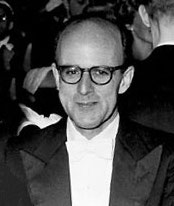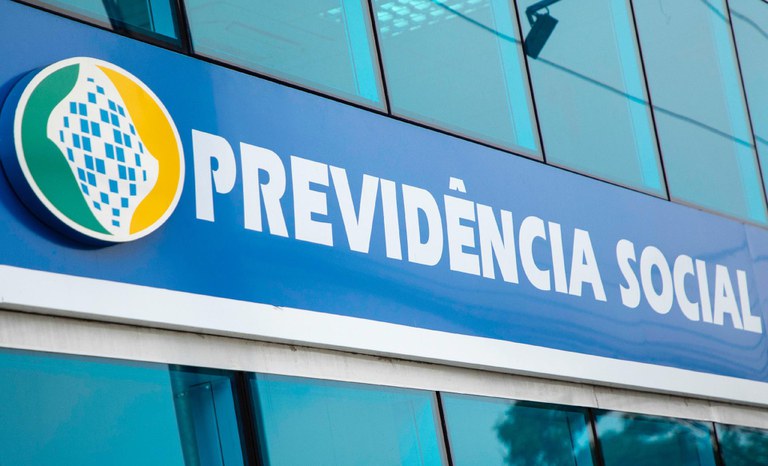| Max Perutz | |
|---|---|
| Max Perutz | |
| Nascimento | 19 de maio de 1914[[Categoria:Predefinição:Categorizar-ano-século-milénio/1]] Viena |
| Morte | 6 de fevereiro de 2002 (87 anos)[[Categoria:Predefinição:Categorizar-ano-século-milénio/1]] Cambridge |
| Nacionalidade | britânico |
| Alma mater | Universidade de Viena, Peterhouse |
| Prêmios | |
| Orientador(es)(as) | John Desmond Bernal |
| Orientado(a)(s) | Francis Crick |
| Instituições | Universidade de Cambridge |
| Campo(s) | biologia molecular, cristalografia, bioquímica |
Max Ferdinand Perutz, OM, CBE (Viena, 19 de maio de 1914 — Cambridge, 6 de fevereiro de 2002) foi um biólogo molecular austríaco.
Conjuntamente com John Kendrew foi agraciado com o Nobel de Química de 1962, devido aos seus estudos sobre a estrutura das proteínas globulares.[1]
Conferências
Em 1980 foi convidado para participar das Royal Institution Christmas Lectures sobre The Chicken, the Egg and the Molecules (A galinha, o ovo e as moléculas).
Obras
- 1962. Proteins and Nucleic Acids: Structure and Function. Amsterdam and London. Elsevier
- 1989. Is Science Necessary? Essays on science and scientists. London. Barrie and Jenkins. ISBN 0-7126-2123-7
- 1990. Mechanisms of Cooperativity and Allosteric Regulation in Proteins. Cambridge. Cambridge University PressISBN 0-521-38648-9
- 1992. Protein Structure : New Approaches to Disease and Therapy. New York. Freeman (ISBN 0-7167-7021-0)
- 1997. Science is Not a Quiet Life : Unravelling the Atomic Mechanism of Haemoglobin. Singapore. World Scientific. ISBN 981-02-3057-5
- 2002. I Wish I’d Made You Angry Earlier.Cold Spring Harbor, New York. Cold Spring Harbor Laboratory Press. ISBN 978-0-87969-674-0
- 2009. What a Time I Am Having: Selected Letters of Max Perutz edited by Vivien Perutz. Cold Spring Harbor, New York. Cold Spring Harbor Laboratory Press. ISBN 978-0-87969-864-5
Bibliografia
- Brown, Andrew, 2005. J.D. Bernal: The Sage of Science. Oxford University Press. ISBN 0-19-920565-5
- De Chadarevian, Soraya, 2002. Designs For Life: Molecular Biology After World War II. Cambridge Univ. Press. ISBN 0-521-57078-6
- Dickerson, Richard E., 2005. Present at the Flood: How Structural Molecular Biology Came About. Sinauer. ISBN 0-87893-168-6;
- Ferry, Georgina, 2007. Max Perutz and the Secret of Life. Published in the UK by Chatto & Windus (ISBN 0-701-17695-4), and in the USA by the Cold Spring Harbor Laboratory Press.
- Finch, John; 'A Nobel Fellow on Every Floor', Medical Research Council 2008, 381 pp, ISBN 978-1-84046-940-0; this book is all about the MRC Laboratory of Molecular Biology, Cambridge.
- Hager, Thomas, 1995. Force of Nature: The Life of Linus Pauling. Simon & Schuster. ISBN 0-684-80909-5
- Hunter, Graeme, 2004. Light Is A Messenger, the life and science of William Lawrence Bragg. Oxford Univ. Press. ISBN 0-19-852921-X.
- Horace Freeland Judson, 1979. "The Eighth Day of Creation: Makers of the Revolution in Biology". Touchstone Books, ISBN 0-671-22540-5. 2nd edition: Cold Spring Harbor Laboratory Press, 1996 paperback: ISBN 0-87969-478-5.
- Krude, Torsten, ed., 2003. DNA Changing Science and Society. Cambridge Univ. Press. ISBN 0-521-82378-1. Being the Darwin Lectures for 2003, including one by Sir Aaron Klug on Rosalind Franklin's role in determining the structure of DNA.
- Maddox, Brenda, 2003. Rosalind Franklin: The Dark Lady of DNA. ISBN 0-00-655211-0.
- Medawar, Jean: Pyke, David (2012). Hitler's Gift: The True Story of the Scientists Expelled by the Nazi Regime (Paperback). New York: Arcade Publishing. ISBN 978-1-61145-709-4
- Olby, Robert; 'Perutz, Max Ferdinand (1914–2002), Oxford Dictionary of National Biography, online edn, Oxford University Press, Jan 2008.
- Paterlini, Marta, 2006. Piccole Visioni: La Grande Storia di una Molecola. Codice Edizioni. ISBN 88-7578-052-8
- Ridley, Matt, Francis Crick: Discoverer of the Genetic Code (Eminent Lives). HarperCollins Publishers. ISBN 0-06-082333-X.
- Sayre, Anne, 1975. Rosalind Franklin and DNA. New York: W.W. Norton and Company. ISBN 0-393-32044-8.
- Watson, John D., 1980 (1968). The Double Helix: A Personal Account of the Discovery of the Structure of DNA. Atheneum. ISBN 0-689-70602-2. Gunther Stent edited the 1980 Norton Critical Edition (ISBN 0-393-01245-X).
- Wilkins, Maurice, 2003. The Third Man of the Double Helix: The Autobiography of Maurice Wilkins. ISBN 0-19-860665-6.
Referências
- ↑ «Chemistry Laureates: Fields». www.nobelprize.org. Consultado em 9 de agosto de 2018
Ligações externas
- «Perfil no sítio oficial do Nobel de Química 1962» (em English)
- RedirecionamentoPredefinição:fim
| Precedido por Melvin Calvin |
Nobel de Química 1962 com John Kendrew |
Sucedido por Karl Waldemar Ziegler e Giulio Natta |
| Precedido por John Fleetwood Baker, William Albert Hugh Rushton e Kingsley Charles Dunham |
Medalha Real 1971 com Percy Edward Kent e Gerhard Herzberg |
Sucedido por Wilfrid Bennett Lewis, Francis Crick e Derek Barton |
| Precedido por Robert Burns Woodward |
Medalha Copley 1979 |
Sucedido por Derek Barton |
| |
Predefinição:Medalha Real (1951 — 2000) Predefinição:Medalha Copley (1951 — 2000) Predefinição:Esboço-biólogo






 " class="attachment-atbs-s-4_3 size-atbs-s-4_3 wp-post-image" alt="O que estudar para o enem 2023">
" class="attachment-atbs-s-4_3 size-atbs-s-4_3 wp-post-image" alt="O que estudar para o enem 2023"> " class="attachment-atbs-s-4_3 size-atbs-s-4_3 wp-post-image" alt="Qual melhor curso para fazer em 2023">
" class="attachment-atbs-s-4_3 size-atbs-s-4_3 wp-post-image" alt="Qual melhor curso para fazer em 2023"> " class="attachment-atbs-s-4_3 size-atbs-s-4_3 wp-post-image" alt="Enem: Conteúdos E Aulas On-Line São Opção Para Os Estudantes">
" class="attachment-atbs-s-4_3 size-atbs-s-4_3 wp-post-image" alt="Enem: Conteúdos E Aulas On-Line São Opção Para Os Estudantes"> " class="attachment-atbs-s-4_3 size-atbs-s-4_3 wp-post-image" alt="Como Fazer Uma Carta De Apresentação">
" class="attachment-atbs-s-4_3 size-atbs-s-4_3 wp-post-image" alt="Como Fazer Uma Carta De Apresentação"> " class="attachment-atbs-s-4_3 size-atbs-s-4_3 wp-post-image" alt="Como Escrever Uma Boa Redação">
" class="attachment-atbs-s-4_3 size-atbs-s-4_3 wp-post-image" alt="Como Escrever Uma Boa Redação"> " class="attachment-atbs-s-4_3 size-atbs-s-4_3 wp-post-image" alt="Concurso INSS edital 2022 publicado">
" class="attachment-atbs-s-4_3 size-atbs-s-4_3 wp-post-image" alt="Concurso INSS edital 2022 publicado">


